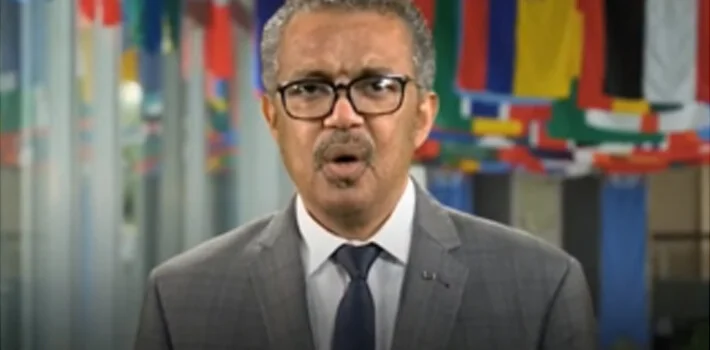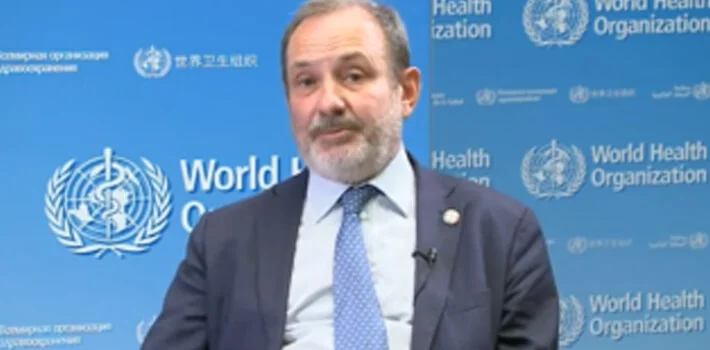
Governments have an important role to play in food safety to ensure it gets the attention and investment it deserves, according to a senior food standards officer with the Codex Alimentarius secretariat.
Sarah Cahill said authorities can ensure what food businesses are doing is adequate to guarantee consumers are getting safe food.
“This means that a government needs to have a strong food control system. For many countries this is still a challenge, they are still working toward having the appropriate infrastructure not only to establish regulations for food but to implement them and help food producers to know what they are supposed to do. They can also play a role in bringing together the different players and sectors along the food chain and making sure everyone is aware of the importance of food safety,” Cahill said.
Cahill spoke during a Facebook live session set up by the United Nation’s Food and Agriculture Organization (FAO) and World Health Organization (WHO) ahead of World Food Safety Day 2020 on June 7 on how governments, producers, manufacturers, consumers and vendors can ensure food safety. The secretariat of the Codex Alimentarius Commission, which includes six food standards officers, provides coordination across Codex activities.
Not just once a year
In a video message, WHO Director-General Tedros Adhanom Ghebreyesus, said every year unsafe food is responsible for thousands of deaths, which are all preventable.

“This year’s World Food Safety Day is a reminder that we can all play a role in making food safer. From the time food is grown and transported to when people are shopping and preparing meals each of these is a chance to prioritize food safety. This year we are particularly emphasizing access to safe and healthy food in markets. But food safety should not be an issue that is prioritized only once a year. Food safety is everyone’s business, every day. In times of crisis, it is more important than ever.”
Cahill said to ensure the topic is important every day, World Food Safety Day helps build awareness and makes sure everyone knows what their role is in making food safe.
“Food production is a chain of events, it starts even before the farm as some of the inputs such as animal feed also contribute to the safety of food. We have to look at what happens at the farm, what happens after that in terms of harvesting, what happens then in terms of processing and transformation of the crops or animal products and then the transportation and retail sectors. At all of those points there is an opportunity for our food to be contaminated and become unsafe. This is why it is really important to take a look at every step in the food chain and see what can be done because the safety of our food is only as good as the weakest link in that chain,” Cahill said.
Focus on producers and transportation
Producers must keep hazards or contaminants out of food or make sure they stay at as low a level as possible, said Cahill.
“So whether you are growing crops or rearing animals, good hygiene and biosecurity are important, good husbandry and veterinary practices and also good environmental waste management so you are producing food in an environment which minimizes the possibility for that food to be contaminated,” she said.
“As we move from the farm through harvesting and onto processing…we need to make sure food remains clean, that we are using water that is safe, that we are implementing good hygiene and the workers involved are aware of the role they play and are practicing good personal hygiene and keeping the environment in which we produce food safe. Good hygiene practices are well documented and relatively simple but they need to be implemented consistently to be effective.”
Cahill added HACCP allows identification of weak points in the food chain and what measures can be taken to control, prevent or reduce contamination. She also spoke about transportation of food.
“Some foods like meat, milk or dairy products are perishable which means we need to control the temperature of these products as they move from one location to another and this can be a challenge for many countries that don’t have the technology or resources to maintain that temperature control or cold chain to protect the food,” she said.
“Even with dried foods that we think are stable, we need to protect them from humidity and environmental contamination. For example, grains are important basic crops in many countries. If these crops are not keep dry, if there is moisture, there is the potential for molds to grow on them which can produce toxins that can end up in the cereal or the product that consumers are eating. With packaging we need to be sure it is safe to be in contact with food and does the job it is supposed to do, protect the food, and not contribute to more contamination of the food.”
A focus on marketsM
Several hundred thousand viewers from across the globe followed the event on Facebook, Twitter, LinkedIn and YouTube and took part in the live question and answer session.
“In these challenging times, the motto of the World Food Safety Day is more pertinent than ever: food safety is everybody’s business,” said Markus Lipp, head of the FAO Food Safety and Quality Unit. “No matter what else is going on, every single person still needs safe food every day. We cannot let up in our vigilance to ensure that our food is safe.”
Safe food is critical for economic development, trade and the international reputation of every country. Investment in consumer food safety education could reduce foodborne disease and return savings of up to 10-fold for each dollar provided, according to FAO and WHO.
The focus of World Food Safety Day in 2020 was on markets. Members of the International Food Safety Authorities Network (INFOSAN) met for webinars on safe food in markets in mid-May. Events marking the day will run until mid-June when the Republic of Korea has its 19th national celebration of food safety.

Francesco Branca, WHO director for nutrition and food, said guidelines for those selling food in markets include personal hygiene so washing hands and using hand sanitizers, use of PPE as they often have contact with people, use and safely dispose of gloves and wash hands when changing them, clean surfaces often with sanitizers and if any symptoms of illness to stay at home.
“There is a problem sometimes in the infrastructure of markets, the availability of fresh water and the safe disposal of waste,” Branca said during the Facebook live session.
“An important thing is the separation of the different areas of markets, what we call the zoning. So the fruit and vegetables should be separated from the part selling animal products, the meat should be separate and we shouldn’t really have the killing of live animals within the market. Also, the hygiene that is practiced by the vendors themselves and disinfection of the surfaces used for sale and preparation of the food.”
Branca said people would not buy food which they do not trust and if they believed it was going to give them some disease.
“In some countries there is a system with marks on the doors on the facility selling food, this is done by inspectors. In Denmark they have the smiley system so you have a smile on the door when the food inspector has gone and found no problem. Trust authorities and yourself, look at use of basic hygiene rules in the facility. We also trust the facilities that are regularly controlled,” he said.
“The seller has legal responsibilities but the buyer has a responsibility to ensure those rules are followed. Food safety doesn’t end at the point of purchase you will bring the food home and you have to continue to handle it safely. Consumers have a role to play because they have to speak up, there are a lot of consumer organisations who are calling for adequate regulations and enforcement of those regulations.”

